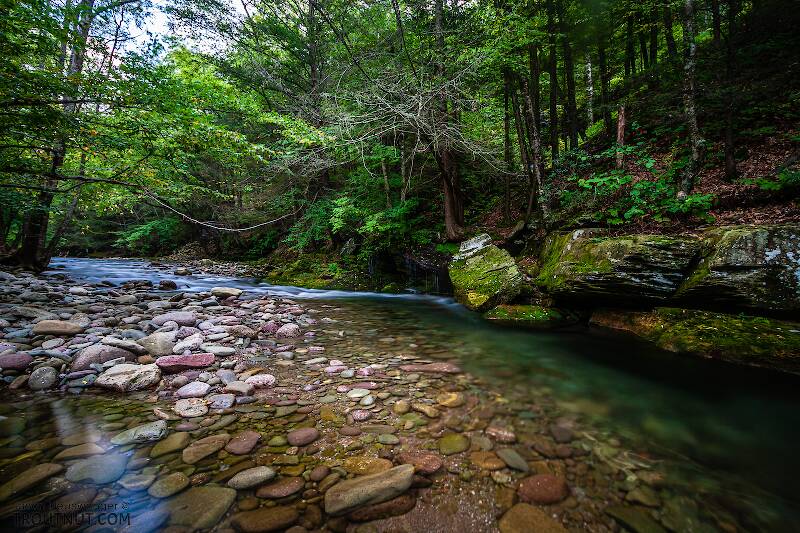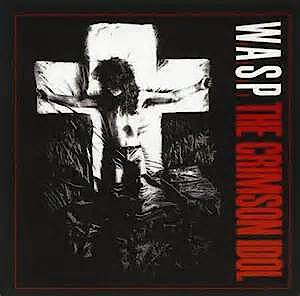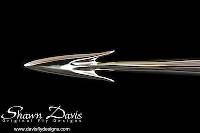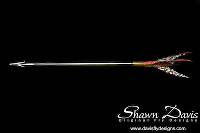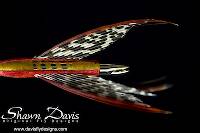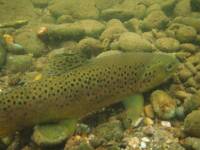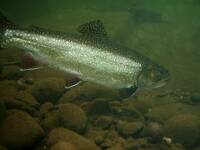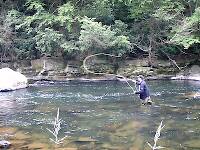
Hex Mayflies
Hexagenia limbata
The famous nocturnal Hex hatch of the Midwest (and a few other lucky locations) stirs to the surface mythically large brown trout that only touch streamers for the rest of the year.
Featured on the forum

This one seems to lead to Couplet 35 of the Key to Genera of Perlodidae Nymphs and the genus Isoperla, but I'm skeptical that's correct based on the general look. I need to get it under the microscope to review several choices in the key, and it'll probably end up a different Perlodidae.

Troutnut is a project started in 2003 by salmonid ecologist Jason "Troutnut" Neuswanger to help anglers and
fly tyers unabashedly embrace the entomological side of the sport. Learn more about Troutnut or
support the project for an enhanced experience here.
TimCat on Jul 19, 2016July 19th, 2016, 4:08 pm EDT
As a person who does mainly small-stream fishing, I am itching to try these tactics out. I will hopefully be able to get a fly to way more spots on the brush-lined rivers I am usually fishing.
Combining the bow and arrow with the roll cast is ingenious. He also shows how to gather extra line in your hand to make the standard bow and arrow cast longer. Just watch... https://www.youtube.com/watch?v=uv45vyAC3f0
Combining the bow and arrow with the roll cast is ingenious. He also shows how to gather extra line in your hand to make the standard bow and arrow cast longer. Just watch... https://www.youtube.com/watch?v=uv45vyAC3f0
"If I'm not going to catch anything, then I 'd rather not catch anything on flies" - Bob Lawless
Adirman on Jul 20, 2016July 20th, 2016, 7:28 am EDT
Great post! I use frequently use the "bow and arrow" when im fishing up in the Adirondacks, sometimes, its the only option yu have. Im gonna try getting more distance by holding the line further up like he did but, in order for it to be effective, looks like you REALLY gotta bend that rod back!
PaulRoberts on Jul 20, 2016July 20th, 2016, 11:25 am EDT
I do a lot of B&A casting, and using Joe's/George's extended distance techniques. And, yeah, you've got to get the rod loaded deeply. Soft rods won't do the trick. Need some power all the way out into the tip. Also gotta watch smacking the tip on wood and rocks. Ouch!
Troutnut on Jul 20, 2016July 20th, 2016, 12:04 pm EDT
Really cool trick to combine it with a roll cast. I'll have to give that a try on the small stream where I study dwarf dollies. Lots of bow-and-arrow cast opportunities there.
Jason Neuswanger, Ph.D.
Troutnut and salmonid ecologist
Troutnut and salmonid ecologist
Quick Reply
Related Discussions
Topic
Replies
Last Reply
Re: Question on dapping flies, casting on small streams, and a fishing report.
In Beginner Help by Cptenn94
In Beginner Help by Cptenn94
6
Aug 27, 2015
by TimCat
by TimCat
10
Jul 25, 2012
by PaulRoberts
by PaulRoberts
24
Sep 27, 2011
by Jmd123
by Jmd123

